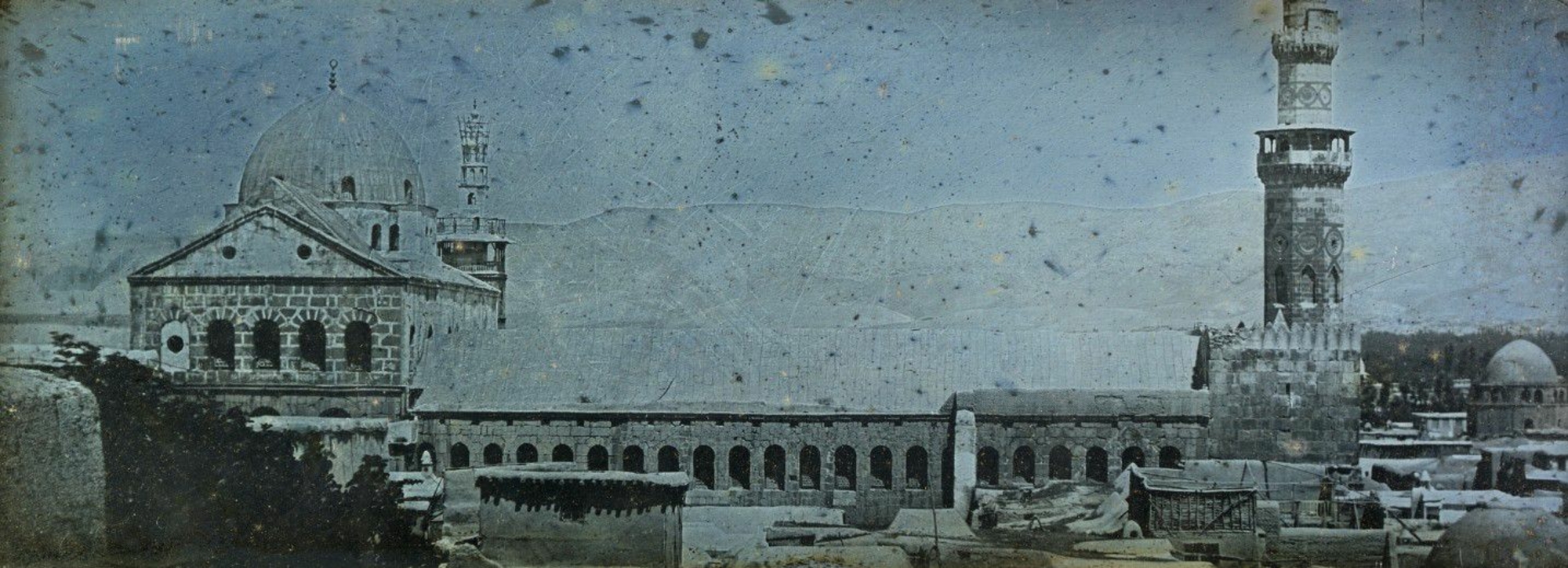
- Home
- Explore the site
- Damascus, capital of the Umayyads
- The revival of an ancient city
Damascus under Byzantine rule
Before it was incorporated into the fledgling Arab empire in 635, Damascus was an eastern city. Its ancient and markedly orthogonal road network was already a distant memory and the large spaces dominated by monuments to polytheistic cults were occupied in the paleo-Christian and then Byzantine periods by churches, monasteries, palaces and residential complexes, which modified the way people and goods moved around the city. The esplanade of the temple dedicated to Jupiter was now crowded with buildings and at the end of the 4th century the temple was replaced by a church dedicated to St John the Baptist.
Upon their arrival, the Arab conquerors chose to follow in the footsteps of their predecessors: a first mosque was created in the inner courtyard of the temple, and Mu'awiyah moved into a residential complex adjoining the church. The great mosque refounded by al-Walid in 705 was built in the same sector of the temple, and the palace was extended along its southern wall. This provided Islam- still a minority faith in the city - with a building that underscored its presence.
An Umayyad tradition
The Umayyads could have built a new district next to the old urban centre. Instead, they chose to build on the site occupied by the city’s former masters. This signalled their intention to retain control over the regions captured from the Byzantine empire. The practice of building on the Byzantine fabric of cities conquered in the Near East was not unique to Damascus. The Umayyads took the same approach in several of the region’s cities, such as Amman and Jerash in Jordan, where the grand mosque and palace were built in the ancient centre of the city, which had been Christianised in the Byzantine period by the founding of churches.
Associated media
Open Media Library
